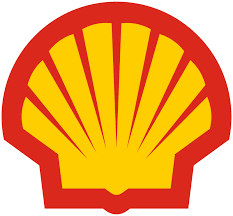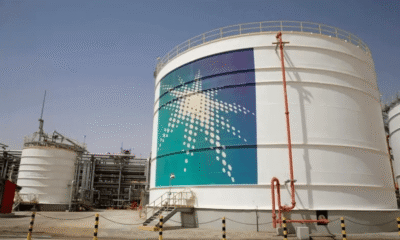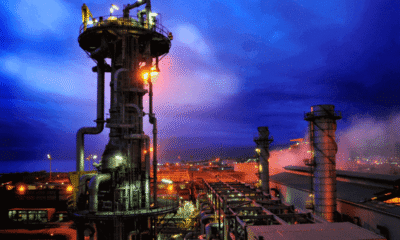Gas prices saw mixed reactions in the US, the UK & Continental Europe on May 26, 2025, amid growing concerns over supply disruptions.
Prices rose in Europe after unplanned capacity cuts were announced at Norway’s massive Troll gas field due to external power issues, compounding ongoing maintenance at other key sites like Nyhamna and Aasta Hansteen.
Equinor extended a partial outage at Troll until May 30 following a compressor failure. The outage, which began after the field’s annual one-day stop-start test on May 21, has affected output by 34.6 million cubic meters per day, leaving Troll’s remaining capacity at 90 mcm/d.
Norway is under pressure to maintain stable flows as the continent scrambles to refill gas storage, currently at just 45%. Geopolitical tensions also weigh on sentiment, particularly as hopes for a Ukraine peace deal continue to fade.
The US natural gas price closed at roughly $3.66/MMBtu on May 26, compared with 3.75/MMBtu recorded on May 25.
UK natural gas futures held steady at 87.15 pence per therm.
European natural gas futures topped €37.25/MWh on May 26, up from €36.45/MWh recorded on May 23.
Read: Natural Gas Prices May 20, 2025: US, UK & Europe
Major Natural Gas Price Benchmarks
| | |
| | Reflects supply/demand in North America
Tied to US shale gas production & pipeline infrastructure dynamics |
| | Europe's leading gas benchmark
Reflects LNG and pipeline flows from Russia, Norway, and LNG imports |
| | Reflects Asian demand, LNG deliveries to Japan & South Korea |
| NBP (National Balance Point) | Linked to European gas markets
Influenced by LNG & North Sea supply Futures |
Other benchmarks include
- Oil-Linked Pricing: Some long-term contracts ( Russia’s Gazprom pipeline gas exports) still use oil-indexed pricing. Gazprom has long preferred long-term contracts and hybrid pricing with spot elements to hedge against price volatility.
- AECO Canada: It is Canada’s benchmark linked to Western Canada’s pipeline gas supply
Key Factors Influencing Natural Gas Prices
Several supply and demand factors influence natural gas prices. Below is a detailed breakdown of key aspects affecting natural gas prices:
Supply Factors
- Production Levels: Qatar, Russia, and US shale gas production heavily influence global supply. Thanks to fracking technology, the US is already the world’s top natural gas producer. Thus, higher gas production by these countries can push prices down due to oversupply.
- Storage Inventories: Natural gas is stored in underground facilities. Thus, high storage levels generally lead to lower prices. At the same time, low storage levels signal scarcity, leading to price surges.
- Imports/Exports: Fluctuations in gas exports via pipelines or LNG from key producers can significantly affect regional prices. For instance, European gas prices soared by 30% in September 2022 following the indefinite shutdown of Russia’s Nord Stream 1 pipeline. The pipeline, which runs under the Baltic Sea to Germany, historically supplied between 50 – 55 BCM/year of gas to Europe. Likewise, rising liquefied natural gas (LNG) exports by Qatar, Australia, and the US can lead to oversupply and lower prices.
Demand
- Electricity Sector Competition: Countries rely on various sources for power generation, including natural gas, nuclear power, coal, and renewable energy like wind and solar. Suppose the prices of coal and renewables increase. In such developments, electricity producers will shift to natural gas. Conversely, if coal or renewable sources become cheaper, demand for gas will fall, resulting in lower gas prices.
- Weather conditions: Weather plays a significant role in influencing natural gas prices. During the summer, there is a massive surge in the demand, especially in Europe & North America, for air conditioning systems. The high demand for electricity to cool homes and industrial plants can increase natural gas prices. At the same time, during the cold winter season, there is increased gas demand, especially across Europe, North America, and East Asia, to heat homes and industries. When chilly weather hits—like snowstorms or Arctic blasts—it can freeze up gas wells. That means less output, slower deliveries, and higher prices. Hurricanes often shut down oil and gas operations temporarily, pushing prices higher.
- Economic Growth: Strong global economic growth, especially in the US, China, Japan, South Korea, and the EU, boosts industrial demand for natural gas. The manufacturing sector (chemicals, automotive, petrochemicals) depends heavily on gas for feedstock and power generation. However, a weak global economic outlook reduces gas demand, and thus, prices drop.
Geopolitics
- Geopolitical tensions, such as the 2023-2025 Middle East Crisis and the 2022-2025 Russia-Ukraine war, negatively impact gas prices. These tensions disrupt pipeline gas or LNG supplies from producing countries (Russia, Qatar, Australia) to Europe, causing price spikes.
- Russia-Ukraine War: Sanctions on Russian gas disrupted gas supplies to Europe, causing price surges.
- Middle East Conflicts: The tensions in the Middle East impact LNG exporters like Qatar. Following the Houthi Rebel attacks on commercial shipping passing along the Red Sea, Qatar has detoured its LNG tankers towards the Cape of Good Hope (Southern Africa), a much longer route to export LNG to its European clients.

























